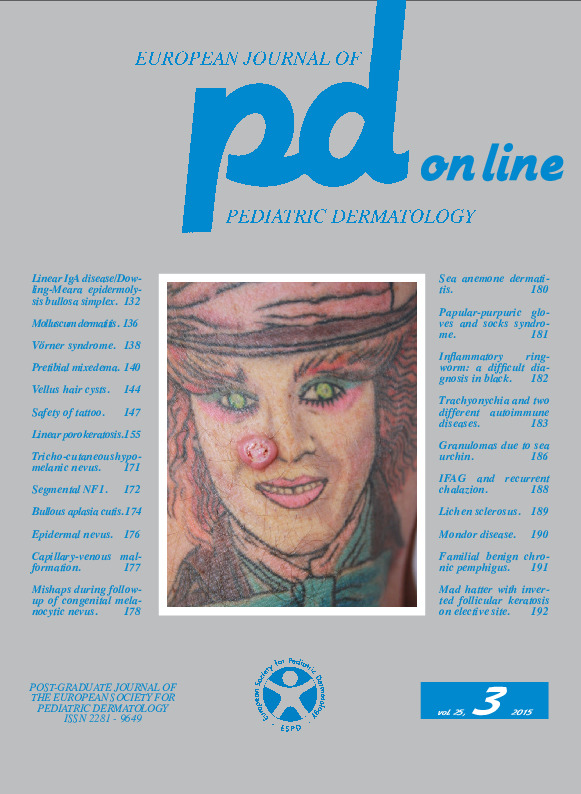Idiopathic facial aseptic granuloma and recurrent chalazion in a child with possible NF1
Downloads
DOI:
https://doi.org/10.26326/2281-9649.25.3.1149How to Cite
Bonifazi E. 2015. Idiopathic facial aseptic granuloma and recurrent chalazion in a child with possible NF1. Eur. J. Pediat. Dermatol. 25 (3): 188. 10.26326/2281-9649.25.3.1149.
pp. 188
Abstract
In the child you can observe not exceptionally on the face granulomatous, generally single nodules, which increase in volume for 1-2 months and then, once reached their maximum diameter, remain unchanged for months and finally slowly regress within periods of time varying from 6 to 18 months.Idiopathic facial aseptic granuloma (IFAG) is the name today given to these self-healing nodules whose etiology is not known. They are actually considered a granulomatous reaction similar to that observed in chalazion around the meibomiam gland. As chalation is frequently associated with rosacea some Authors hypothesized a relationship between IFAG and rosacea (1, 2). Before making the diagnosis of IFAG and clinically monitoring the lesions waiting for their spontaneous regression, it is necessary to test especially in males the oxidative capacity of neutrophils in order to rule out chronic granulomatous disease.
Keywords
Idiopathic facial aseptic granuloma, Chalazion, Chronic granulomatous disease

